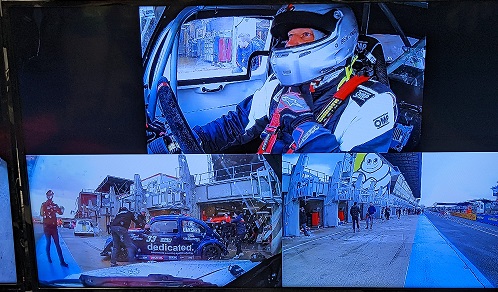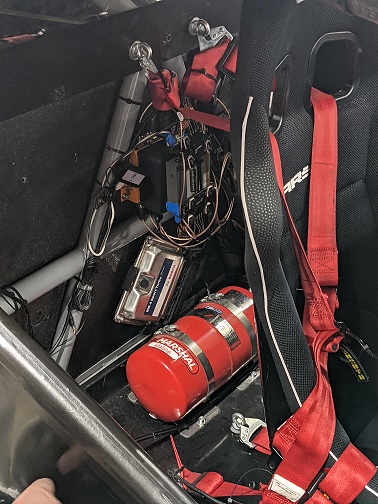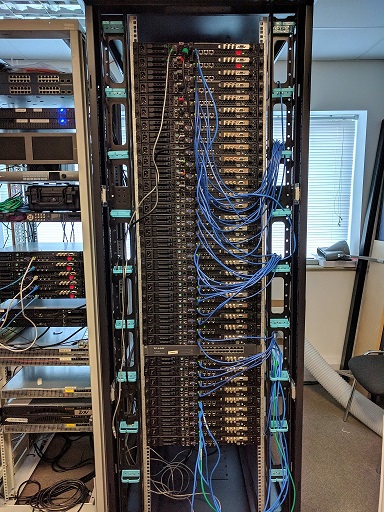Immense video processing power in a tiny system
For many years we have offered our broadcast encoding and decoding software on the NUC compact form-factor platform, a popular hardware platform for small PCs with SDI Input and Output. But what makes the NUC different in the sea of compact encoders/decoders out there? Let’s find out:
Full-fat encoding and decoding, not a cellphone encoder
Our compact encoder/decoder runs the same software as our regular servers. This means that users have access to all product capabilities, including “full-fat” encoding and decoding up to 10-bit 4:2:2, 8 audio pairs, closed captions, SCTE, teletext etc. In contrast, virtually all other compact products are based on low-power cellphone encoders or consumer set-top-box decoders lacking these features. This means they are not able to meet the demanding requirements of high bitrate sports transmissions – they are not able to decode high bitrate feeds, nor the 4:2:2 feeds used in premium sports transmissions. In fact, our compact decoder was originally designed for back-of-TV monitoring for 50Mbit/s 10-bit 4:2:2 feeds without the need for a 1U server per channel.
Unlike other fixed-function devices which have either a single encode or decode chip, the NUC is also able to function as an encoder and decoder simultaneously, something which is useful in the broadcast world for two-way feeds or monitoring.
What do we mean by a cellphone encoder?
Many compact devices, including backpack-style transmission devices, use a chip originally designed for a cellphone or other consumer device in order to reduce costs and run at a very low power. But in order to save battery life, these devices often lack the motion search capabilities needed in fast moving sports and so end up with poor picture quality during fast motion.

We’ve talked in the past about how we used our compact encoders onboard racing cars at the famous Le Mans circuit. But we’ve never gone into detail about why they were particularly valuable in this application. The obvious answer is that the motion search is far superior to low-power cellphone encoders during fast movement around the track. But there’s also the fact the multiviewer was generated onboard the car and cellphone encoders performed particularly poorly with the three multiview tiles onscreen, confusing the motion estimation of the chip greatly. In contrast our encoder was able to understand the three regions automatically and produce a very high quality output at much lower data rates.
Even to non-technical viewers it’s the perfect demonstration of why not all encoders are made equal.
We would also include consumer-grade encoders such as QuickSync in the category of “cellphone encoders”. These encoders are primarily there for consumer applications such as home videos or games and lack the optimisations needed for crucial sports transmissions.
For those technically minded, the NUC has full AVX-512 SIMD acceleration, comparable to a server-grade system. This is an astonishing level of performance. It’s also worth pointing out that any old NUC isn’t suitable for broadcasting applications, care and attention is needed when choosing the right model and also configuring its power saving settings.
Global Availability
 The NUC is available around the world quickly and very cost-effectively from local retailers. This is in contrast to “embedded” devices which often have long lead-times and are costly, specialist parts. It’s very common to hear “three months wait” from vendors of such products as these vendors often operate in industries where this is not of concern.
The NUC is available around the world quickly and very cost-effectively from local retailers. This is in contrast to “embedded” devices which often have long lead-times and are costly, specialist parts. It’s very common to hear “three months wait” from vendors of such products as these vendors often operate in industries where this is not of concern.
As we explained in a previous blog post, it’s possible to build our compact encoders and decoders in a completely automated fashion. It’s also worth pointing out that the NUC can be carried easily in a pocket or in hand luggage on an airline.
Ruggedisation
“PCs aren’t suitable for rugged environments, you need ‘special hardware’” (whatever “special hardware” might mean). As we saw above, this just isn’t true. We’ve used our compact encoders in racing cars at 150mph, with huge heat and vibrational challenges.
Full access to the Operating System
As a software product we provide full access to the Operating System onboard the NUC. This means you can configure networking, security, orchestration and countless other things as you see fit. This is in contrast to other devices which either provide no access or heavily controlled access.
Conclusion
We’ve seen how our compact encoders and decoders deliver substantially better performance than other compact equipment. But our encoders and decoders are not just available in this one form-factor, they are available in dozens of form-factors. This lets you choose the right form-factor for the right application.

